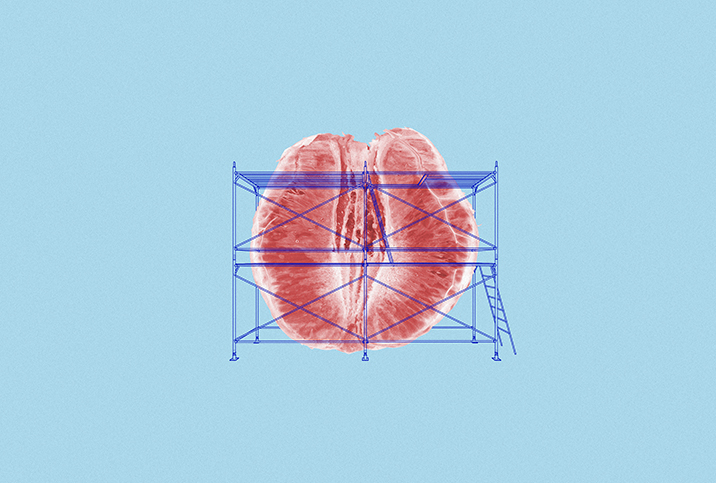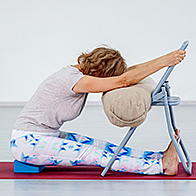Surgery May Be a Medical Necessity for Vaginal Prolapse

Varying degrees of vaginal prolapse or pelvic organ prolapse (POP) are more common than you may think. Prolapse occurs when the pelvic floor's muscles, tissues and ligaments weaken and stretch, which can cause organs, or parts of organs, to fall out of place. In the case of vaginal prolapse, the top of the vagina, called the vaginal vault, drops into the vaginal canal.
For women who become pregnant and give birth, POP is highly common.
"The leading cause of pelvic organ prolapse is pregnancy and childbirth, as the process weakens the muscles and ligaments supporting the pelvic organs," explained Nadir Qazi, D.O., a cosmetic surgeon in Irvine, California. "Other pelvic organ prolapses caused by life events include hysterectomies and menopause."
In other cases, the intense pressure from constipation or a severe cough may cause the pelvic floor to drop, he continued, outlining the initial symptoms of POP.
"One of the more subtle symptoms of pelvic organ prolapse is a feeling of heaviness in the lower abdominal and genital regions," he added. "One might also feel uncomfortable or numb during intercourse. If the prolapse is severe, there may be a vaginal protrusion and it may feel like you're sitting on a ball. It can also be challenging to urinate properly due to pressure on the bladder."
One woman's story
Decreased sensation during sex and varying degrees of incontinence go overlooked as unavoidable, especially in postmenopausal women.
About 300,000 surgeries for pelvic organ prolapse occur annually in the United States.
Sexual educator Edwina Caito, from Fort Wayne, Indiana, was one of those 300,000 people. She explained the drastic situation leading up to her hysterectomy and vaginoplasty.
"As my surgeon put it, 'Instead of your vaginal opening and rectum being neighbors, they were living in a duplex.' Therefore, the pulling and tightening put my openings back where they were supposed to be, once again, giving me my lost 'taint' back," Caito said, referring to the perineum area between the genitals and anus.
"I was completely horrified the first time I touched myself post-op," Caito explained. "I couldn't find my rectum! I literally thought he had sewn it up! After a few moments of panic, I was able to find it, back where it used to be before I had children."
Caito's presurgical symptoms may sound familiar to many women—until things got worse.
"My symptoms were heavy, painful periods, heaviness and pain in my thighs, low back pain, bladder spasms and recurrent urinary tract infections," she said. "During my period, I felt like I was literally carrying a bowling ball inside me. Plus, I could see my uterus at the opening of my vagina. It would get dry and irritated and was so incredibly uncomfortable."
Qazi confirmed this portrayal of the visual signs of POP.
"A severe prolapsed uterus or cervix will look like a small pink protrusion with a depression in the center coming out of your vagina," he explained. "In the case of complete uterine prolapse, the entire uterus falls from the vagina, which can look like a pink water balloon. Where someone might have a prolapse will depend on the strength of specific muscles and ligaments. A person may experience the prolapse of one organ without a collapse of the other pelvic organs."
Qazi, a member of the American Academy of Cosmetic Surgery, explained two of the surgical reconstruction options available.
In a uterosacral ligament suspension, "the top of the vagina is stitched to the uterosacral ligaments," he said. "These strong ligaments typically support the uterus, running from the sacrum to the cervix.
"In the case of a [sacrospinous] ligament fixation, an incision is placed in the vagina. Through that cut, the top portion of the vagina, the vaginal vault, or the cervix is stitched to the sacrospinous ligament, [which] connects the sacrum to the ischial spine," Qazi said.
Both surgeries can be performed transvaginally, though laparoscopic uterosacral ligament suspension is gaining popularity. Both surgeries have similar rates of success, recurrence and complications. However, particular complications vary on a case-by-case basis.
Caito recalled her own experience.
"My pelvic floor was so thinned, it could have torn, exposing my intestines," she explained. "Once [the surgeon] removed my uterus and cervix, he took the connective tissues from those and used them to rebuild my vaginal floor, build a vaginal vault, cuff and suspend it to the area near my tailbone.
"He also built a midurethral sling to keep my urethra in place and another sling to keep my bladder in place," Caito said. "My four-hour procedure turned out to be six hours, and my overnight stay turned into two nights because the post-op swelling caused my legs to go numb. Recovery took a full 12 weeks."
Step one is a correct diagnosis
Caito's return to health was a journey, but so was obtaining a diagnosis in the first place.
"I was misdiagnosed by a different OB-GYN as having heavy periods and interstitial cystitis," she said. "She put me on medications I shouldn't have been on and they in no way helped my symptoms. I went to a second OB-GYN and he immediately could tell I had POP. That was the first time I had ever heard of POP even though my mom spoke of her vagina bulging out after having my brother."
Qazi recommended that patients pick up walking as a form of exercise. Walking has been linked to lower incidences of urinary incontinence.
"Talk to a doctor or physical therapist about what other exercises might be beneficial," he added. "Vaginoplasty after childbirth can also help tighten vaginal muscles to prevent prolapsed rectums and bladders. However, if a minor prolapse has occurred, it's possible that vaginoplasty can [pull] prolapsed organs back into place."
Caito's case may have been complicated due to Ehlers-Danlos syndrome, a group of inherited disorders that weaken connective tissue throughout the body, primarily the blood vessel walls, joints and skin.
But her story isn't at all unfamiliar to many women. Self-advocacy in medical situations is important for women of all ages. Our culture normalizes and silences a lot of female suffering, but discomfort and pain aren't inevitable, nor should you simply put up with them. Follow whatever medical path you need to find relief.




















